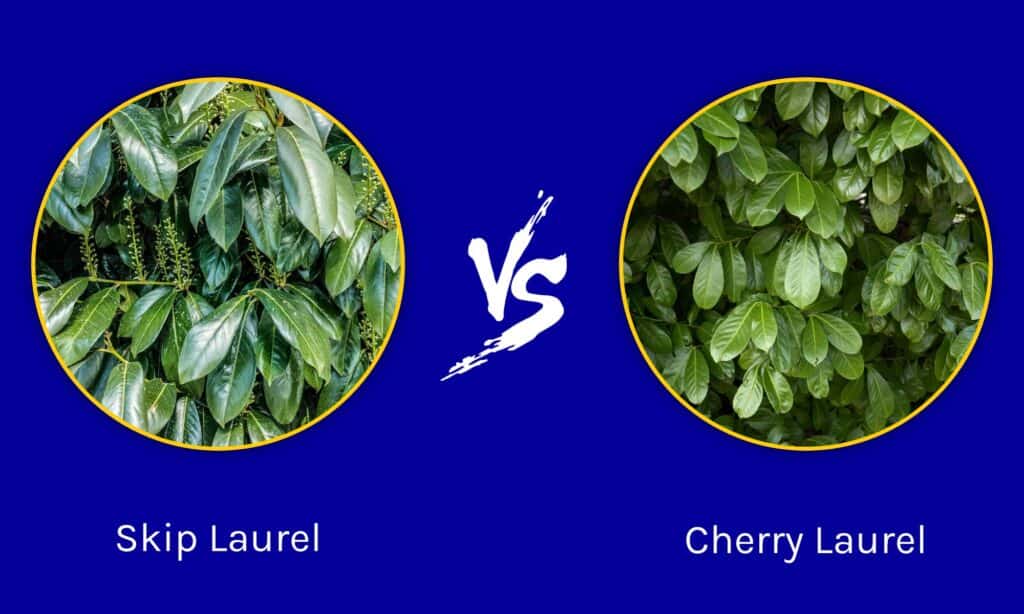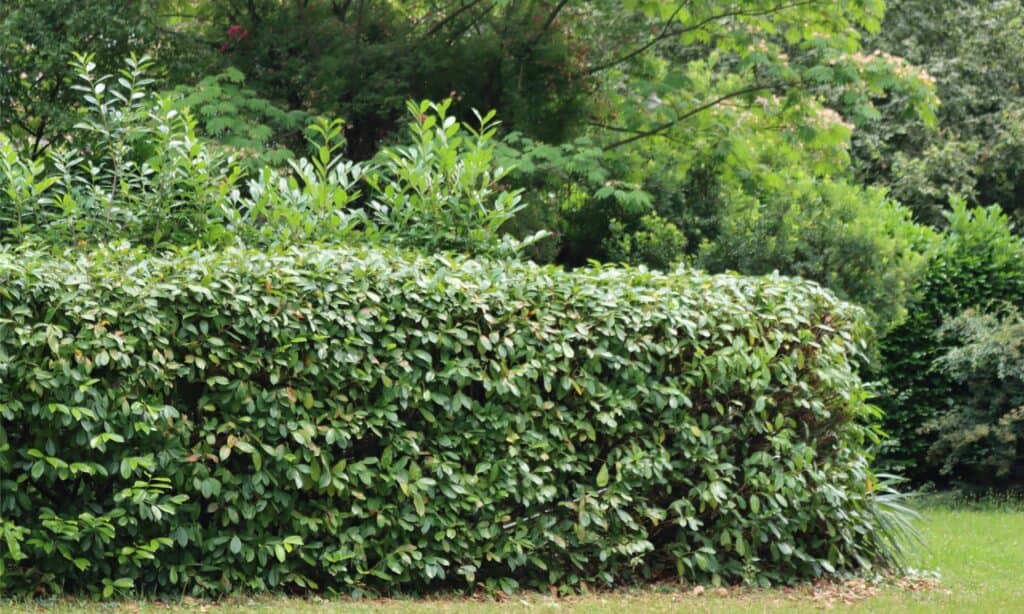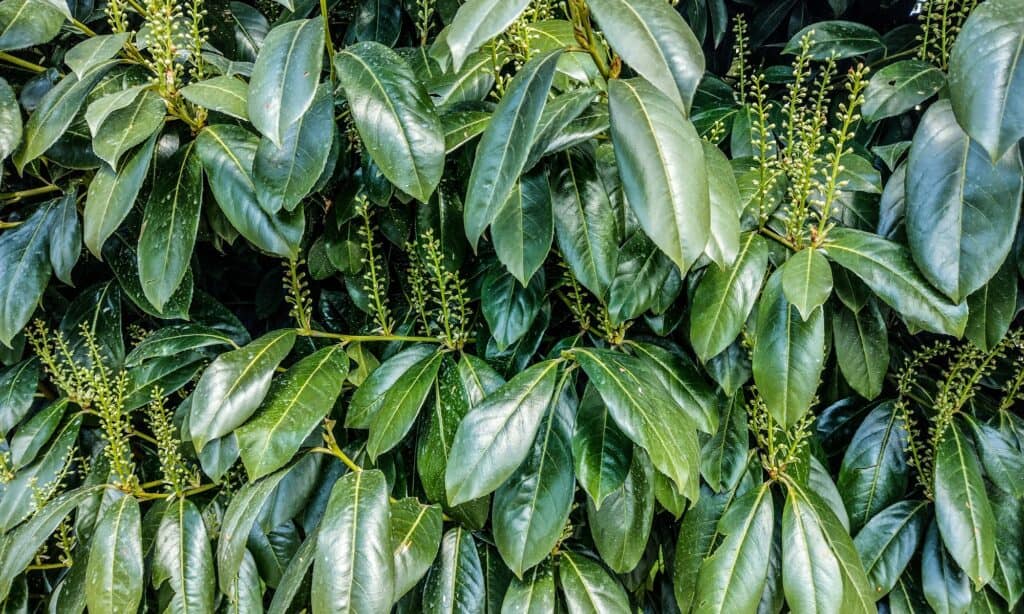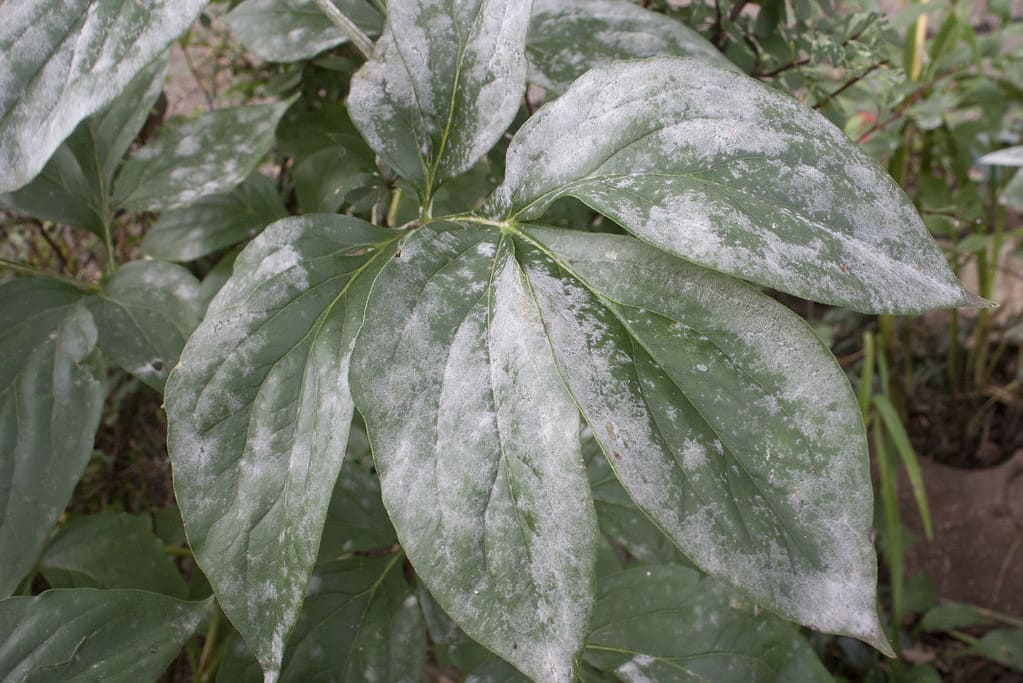When it comes to comparing different shrub varieties, are there any significant differences between a skip laurel vs cherry laurel? Given that skip laurels are a subspecies or specific cultivar of the cherry laurel shrub, can we truly say they are different from each other? What features separate them as individual plants, and how can you learn how to tell them apart?
In this article, we will compare and contrast the skip laurel shrub with a cherry laurel shrub so that you can fully understand what makes them both special. We will address what these plants look like as well as what they are typically used for. Finally, we will give you some tips on how to best care for both of these shrubs in case you are interested in planting them in your own backyard. Let’s get started!
Comparing Skip Laurel vs Cherry Laurel

| Skip Laurel | Cherry Laurel | |
|---|---|---|
| Plant Classification | Prunus laurocerasus ‘Schipkaensis’ | Prunus laurocerasus |
| Description | Thin, glossy green leaves cover shrubs that grow up to 10 feet tall and wide. Produces fragrant white flowers that stand up, as well as black berries. Keeps its shape well when you prune it. | Average glossy green leaves cover shrubs that grow up to 30 feet wide and 20 feet tall. Produces fragrant white flowers that stand tall on their own, as well as black-red berries. |
| Uses | Compact hedge choice for smaller gardens, and much more responsive to pruning compared to other varieties | Fantastic hedge choice for a variety of locations, with some cold tolerance. Doesn’t hold its shape as well as other laurel varieties |
| Origin and Growing Preferences | Native to the Schipka Pass in India; grows best in partial shade or sun, and needs plenty of water when first planted | Native to Europe and Asia; grows best in a variety of light conditions and grows quickly, allowing for easy pruning options |
| Hardiness Zones | 5 through 9 | 5 through 9 |
Key Differences Between Skip Laurel vs Cherry Laurel

The leaves of the skip laurel are thinner and smaller compared to the leaves found on the average cherry laurel.
©iStock.com/saraTM
There are a few key differences between skip laurel shrubs and cherry laurel shrubs. For example, all skip laurels are technically cherry laurels, but not all cherry laurels are skip laurels. The skip laurel shrub grows smaller compared to the average cherry laurel shrub. In addition, cherry laurel leaves are wider compared to skip laurel leaves. Finally, the skip laurel variety of shrub is native to a very specific pass in India, while cherry laurel shrubs are widely native to Europe and Asia.
Let’s go over all of these differences in more detail now.
Skip Laurel vs Cherry Laurel: Classification
Classifying skip laurels and cherry laurels can be a bit confusing at first, given the fact that they are directly related to each other. In fact, all skip laurel shrubs are technically cherry laurel shrubs, as they are a specific cultivar or variety of cherry laurel. However, the skip laurel was bred to be smaller than the cherry laurel, which leads to a distinct difference in their classifications. For example, you would classify cherry laurel shrubs as Prunus laurocerasus, and you would classify skip laurel shrubs as Prunus laurocerasus ‘Schipkaensis’.
Skip Laurel vs Cherry Laurel: Description

The average cherry laurel reaches 30 feet wide and 20 feet tall, making it a better choice than the skip laurel for large areas.
©iStock.com/Janny2
It can be extremely difficult to tell a skip laurel shrub apart from a cherry laurel shrub. However, the skip laurel was created to have some differences from other cherry laurel varieties, so there are a few things to note in their physical descriptions. For example, skip laurel shrubs grow up to ten feet tall and wide, while cherry laurel shrubs grow much larger overall. The average cherry laurel reaches 30 feet wide and 20 feet tall, making it a better choice than the skip laurel for large areas.
In addition to their size differences, the leaves of the skip laurel are thinner and smaller compared to the leaves found on the average cherry laurel. However, the leaves found on both shrub varieties are glossy, deep green, and evergreen. In addition, both skip laurels and cherry laurels grow fragrant white flowers and deep red or black berries, making these shrubs ideal for pollinators and birds alike!
Skip Laurel vs Cherry Laurel: Uses

The skip laurel grows much smaller than the cherry laurel, making it perfect for smaller homes and gardens.
©iStock.com/Herman Vlad
Skip laurels and cherry laurels have the same general use, as they make fantastic shrubs in a variety of gardens and locations around the world. However, the skip laurel grows much smaller than the cherry laurel, making it perfect for smaller homes and gardens. Cherry laurels grow much larger and faster compared to skip laurels, so you may want to consider them if you need privacy hedges throughout your backyard.
Skip Laurel vs Cherry Laurel: Origin and How to Grow
Cherry laurels and skip laurels are fairly easy to grow and propagate, but they originated in different locations. For example, skip laurel shrubs originated in a specific location in India known as the Schipka Pass, giving this shrub its unique name, while cherry laurel shrubs originated in various locations in Asia and Europe. Both of these shrubs thrive in a variety of light conditions, but make sure to give them plenty of water after their initial planting!
Skip Laurel vs Cherry Laurel: Hardiness Zones

You can plant either a skip laurel or a cherry laurel in hardiness zones 5-9 and enjoy its fast-growing qualities.
©iStock.com/seven75
Given that they are directly related to one another, skip laurels and cherry laurels thrive in the same hardiness zones as one another. You can plant either a skip laurel or a cherry laurel in hardiness zones 5-9 and enjoy its fast-growing qualities. However, make sure to do your research as to your average temperatures and the preferred climates of these shrubs, as both skip laurels and cherry laurels struggle in freezing temperatures.
Bonus: Common Diseases and Pests That Damage Laurels

Powdery mildew can develop on cherry laurels.
©SBSArtDept/iStock via Getty Images
Cherry laurels are generally healthy plants – but sometimes diseases and pests can cause damage. Most of the time, the plants can recover on their own – but knowing the cause of these problems can help you to keep them from occurring. Here are a few of the most common cherry laurel ailments:
- Leaf Drop. This is common in newly planted laurels – especially if the weather is harsh during winter or turns warm quickly in the spring. Leaf loss is a stress response to conserve water. Keep new plants well-watered after planting in good soil to minimize this problem.
- Frost Damage. Once again, young plants are most susseptible to damage by Autumn frosts. New growth will be black and shriveled and will require pruning. Winter frost damage can affect plants of all ages and will result in unsightly brown brown patches. Recovery will take place in the spring when new growth replaces the brown leaves. Covering plants during frosts can prevent damage.
- Powdery Mildew. This fungal disease coats leaves with a powdery coating. Weather conditions cause this condition but plants can usually grow out of it. Affected leaves can be trimmed or a fungicide can be applied if necessary.
- Shot Hole. This is a disease caused by different types of bacteria or fungi. Brown spots appear that turn into holes as the plant fights the disease. Intervention is rarely required but the disease can spread to other plants – so sterilize pruning shears after trimming the diseased plant to avoid spreading.
The photo featured at the top of this post is © iStock.com/seven75
Sources
- Vegetative propagation of Cherry laurel (Prunus laurocerasus L.) using semi-hardwood cuttings, Available here: https://academicjournals.org/journal/AJAR/article-full-text-pdf/784CF8229017
Thank you for reading! Have some feedback for us? Contact the AZ Animals editorial team.







